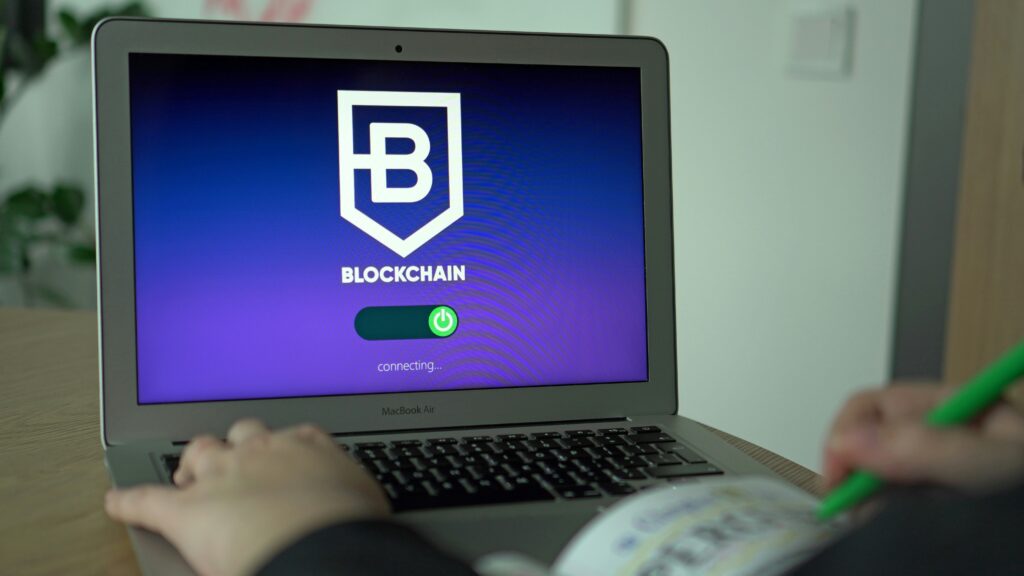Real-Time Farming Is Getting Smarter
Precision farming isn’t just a buzzword anymore. It’s daily reality. Farmers now rely on a digital web of soil sensors, GPS-equipped tractors, and drones buzzing over crops. Each tool feeds data constantly, tracking everything from soil moisture to plant stress to machine efficiency.
This isn’t about collecting data for later. It’s about acting on it immediately. If a sensor picks up dry soil, irrigation systems can adjust on the fly. If a drone spots pest damage, decision-makers can intervene before the problem spreads. The payoff is clearer margins, less waste, and faster decisions grounded in facts instead of guesses.
All of this connects back to the cloud. Machines talk to each other. Fields update in realtime. Farmers, even in remote areas, can manage entire operations from a tablet in the cab. It’s efficient, lean, and increasingly non-optional in a competitive food economy. Farming may still be about the land, but now the land talks back.
Farming isn’t just rows of crops and long days in the sun anymore. Behind the fields and barns, technology is transforming every inch of the process. Sensors in the soil track moisture levels. Smart collars monitor livestock health in real time. Even tractors are becoming autonomous. The age of guesswork is ending.
The Internet of Things (IoT) is now critical to modern agriculture. It connects equipment, tools, and systems into one responsive network. Farmers don’t have to walk the fields to know what’s happening. They get alerts, dashboards, and forecasts straight to their phones. That helps cut waste, boost yields, and avoid disasters before they happen.
As the climate gets more unpredictable and the demand for food keeps rising, smart farming is no longer a luxury. It’s survival. Whether you’re managing a hundred acres or a rooftop garden, IoT is turning data into decisions. And in 2024, smart decisions make all the difference.
Smart Farming: IoT and AI Combine for Predictive Power
Turning Data into Predictions
The fusion of Internet of Things (IoT) tools with artificial intelligence is reshaping modern agriculture. Instead of analyzing data reactively, farmers are now using real-time inputs to anticipate problems—even before they happen.
- IoT sensors track soil moisture, temperature, humidity, and more
- AI models process patterns to forecast conditions and detect anomalies
- Data is no longer passive—it becomes a decision-making asset
Early Pest Detection with Machine Learning
Infestations can devastate crops in just a few days. With machine learning trained on historical pest data and live inputs, it’s now possible to minimize damage by responding early.
- Image recognition and environmental tracking help identify early pest activity
- AI classifies risk levels based on pattern changes and historical outbreaks
- Automated alerts give farmers a head start to apply targeted treatment
Drones and IoT for Continuous Monitoring
Drones equipped with multispectral cameras and IoT-connected networks are enabling high-frequency crop scanning. When combined, these technologies provide a full-spectrum view of plant health at scale.
- Drones capture crop data from above, offering wide-range visibility
- IoT devices on the ground verify conditions like soil pH and moisture
- Analysis software combines both sources to track plant growth, detect stress, and recommend action
Together, these tools are making farms more efficient, responsive, and resilient. Instead of reacting to problems, growers are steering operations with precision—and a powerful layer of foresight.
Precision agriculture isn’t futuristic anymore. It’s now the standard for farms that want to stay competitive. Tools like moisture, temperature, and pH sensors are quietly transforming how and when decisions get made. Knowing the exact moment when soil is ready—or when it needs help—cuts waste and boosts yields. No more guessing. Just data.
Variable rate technology adds another layer. Instead of spraying a whole field equally, these systems target only the patches that actually need attention. Fertilizers, water, even pesticides—applied where they work best and skipped where they’re not needed. The result: healthier crops, lower costs, and fewer environmental impacts.
Numbers back it up. Across multiple farms adopting these tools, output has gone up by 15 to 25 percent, while input costs dropped around 10 percent. That’s not magic. It’s just making every resource do more—and letting tech take guesswork off the table.
Sustainability That Drives Return on Investment
As environmental regulations tighten and consumer demand for responsible business grows, sustainability in operations is no longer just about going green. It’s about working smarter, saving resources, and aligning environmental impact with business performance.
Lowering Carbon Footprint Efficiently
Reducing emissions isn’t only for large corporations. Even small improvements in fuel usage and resource optimization can significantly lower your operation’s overall carbon footprint.
- Adopt smart routing to reduce fuel consumption
- Maintain equipment regularly to ensure efficient performance
- Use analytics to monitor and adjust resource usage over time
Cleaner Water Through Runoff Control
Water stewardship is becoming a key performance indicator. Effective runoff control helps prevent contamination and reduces the strain on local ecosystems.
- Implement proper drainage systems to manage runoff
- Use vegetation buffers to filter water naturally
- Monitor water quality regularly to meet environmental standards
ROI that Matches Eco Goals
Investing in sustainability doesn’t just pay off for the planet—it delivers measurable results for your bottom line.
- Sustainable practices often lead to lower operating costs
- Eco-conscious companies attract loyal customers and top talent
- Tax incentives and grants are increasingly available for green initiatives
Final Thought
Sustainability isn’t a separate strategy—it’s a smarter way to do business. When environmental impact and ROI align, everyone wins.
Farming’s getting sharper thanks to tech that finally talks back. Over-irrigation? It’s fading out. Smart sensors now tell farmers when and where crops actually need water, killing the guesswork and cutting runoff. This real-time feedback isn’t fancy—it’s effective. Crops drink what they need. Fields stay drier. Yields go up.
Storage isn’t getting left behind either. Smarter monitoring systems flag temperature changes, stop mold from spreading, and alert growers before spoilage hits. Less waste means more profit, and less heartbreak watching months of work go bad overnight.
Fuel and chemical use is also dropping, one algorithm at a time. Precision agriculture—machines that know exactly how much to spray or where to drive—means fewer passes through the field and fewer inputs wasted. Bonus: it’s cheaper, cleaner, and quicker.
Old problems, new answers. Farmers aren’t just growing food anymore. They’re running data-driven operations that sprint where they used to crawl.
Feeding more people with the same amount of farmland isn’t a future problem. It’s a right-now problem. Global population keeps climbing, but available agricultural land isn’t growing with it. The equation doesn’t add up without innovation.
That’s where the Internet of Things (IoT) steps in. We’re seeing a surge in smart sensors, connected irrigation systems, drone-assisted monitoring, and real-time soil analytics. These tools aren’t gimmicks—they help farmers use resources more efficiently, catch issues early, and boost yields without breaking more ground.
Precision agriculture, driven by IoT, means one thing: more output from less input. Crops get only the water and nutrients they actually need. Harvesting decisions are based on hard data, not guesswork. And supply chains move quicker, cutting waste between the field and the plate.
It’s not just about tech for tech’s sake. It’s about feeding millions more without bulldozing forests or running farms into the red.
(Related read: How Technological Innovations Are Changing Patient Outcomes in Healthcare)
Tech Barriers That Still Need Solving
No matter how far vlogging and digital tools have come, the basics still pose hurdles for many. Connectivity in rural areas is one of the biggest. Creators in less urban zones continue to struggle with upload speeds, livestream reliability, and even basic access to cloud-based editing and storage. It’s hard to compete when it takes hours just to push a 1080p video online.
For smaller creators looking to integrate cutting-edge tools like IoT-enabled cameras or smart editing assistants, the price tag can sting. Gear that automates and streamlines workflow often comes with upfront costs that aren’t feasible for those not yet monetized or working off thin margins.
Then there’s data. All this new tech collects and stores massive amounts of it, and the line between ownership and exploitation isn’t always clear. Who controls raw footage after it’s processed through smart platforms? What happens when analytics tools slice up viewer behavior to sell to third parties? These questions aren’t just theoretical — they affect trust, strategy, and often, legal risk.
Creators should stay alert. These barriers haven’t gone away, and ignoring them can slow growth just as much as making the wrong kind of content.
The Smart Farm Revolution Is Here
Adoption of agri-tech isn’t crawling anymore—it’s hitting stride. From small family farms to large commercial operations, smart farming tools powered by IoT are becoming less of a novelty and more of a necessity. Sensors in the soil, GPS-guided tractors, weather-linked irrigation systems—these aren’t just high-tech toys. They’re cutting costs, reducing waste, and squeezing more out of every acre.
Farmers who made the leap early are seeing results. They’re tweaking fertilizer use in real time, spotting pest problems before they spread, and avoiding downtime with predictive maintenance. That’s giving them healthier crops, tighter margins, and a leg up in a tough economy.
And here’s the truth: the dirt’s not dumb anymore. It’s wired, talking back through data loops, and giving farmers the kind of insights that used to take seasons—and guesswork—to uncover. The edge is clear. The only question left is who’s ready to plug in and listen.


 Isaac Lesureneric is a tech author at gfxrobotection focusing on digital security, automation, and emerging technologies. He shares clear, practical insights to help readers understand and adapt to the rapidly changing tech world.
Isaac Lesureneric is a tech author at gfxrobotection focusing on digital security, automation, and emerging technologies. He shares clear, practical insights to help readers understand and adapt to the rapidly changing tech world.

